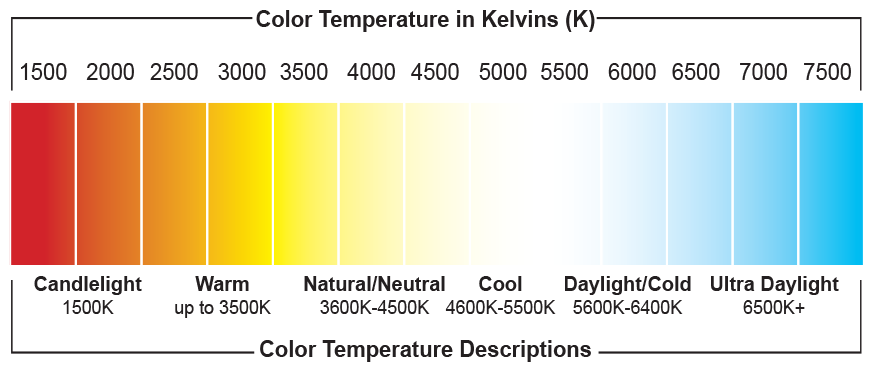Colour Temperature | What Is It & How Does It Affect Videos?
Do you prefer your lighting warm and cosy, or bright and harsh? We’re looking at what colour temperature is, and how it can totally change your video content!
When it comes to shooting video, lighting is a hugely important factor to consider. Whether you’re getting the best lighting for a webcam conference call, or you’re playing with ring lights for YouTube videos, getting it right matters. The type of light you use can determine how harsh the shadows in your shot are, or the colour palette you end up with in your video. It’s this latter point that we’re going to look at more closely here.
What Is Colour Temperature
Colour temperature is measured in Kelvin (K), and every light has a temperature. Slightly confusingly, cooler temperatures produce warmer tones. A lower temperature would give a more orange/yellowy light. As you move up the temperature scale, the colour of the light becomes more white and blue.

Why Does This Matter?
Understanding how to manipulate and work with the tone and warmth of light can affect your videos in both a creative and technical sense.
In terms of creativity, the different temperate and colour light you choose can change the mood of your production. Whether these are small details, or full floodlighting, they can make a huge difference. Different tones and colours are often associated with different things. For instance, colder blue or white tones convey a clinical and heartless feel. Whereas, warmer red tones can suggest a more romantic setting.
Technically speaking, having a handle on colour temperature helps you to set the white balance accurately. “What does that mean?” I hear you cry. Here’s a helpful video from LensProToGo that demonstrates just that!
Becoming familiar with the colour temperature ranges, in Kelvin, enables you to set your white balance and figure out how lights will then appear on camera. Knowing that around 4,500-6,500K is where daylight (depending on the weather) tends to sit can make planning a shoot way easier.
Understanding how to set your white balance properly can also help you to avoid excessive magenta or cyan/blue tones, depending on how much too high or low you set the white balance.
Applying This
The editing process of films and video can be extensive, and hide many a sin. However, the base footage still needs to be shot right, meaning nailing your colour temperature in the first place will save lots of hassle late ron.
If you’re a busy vlogger who creates content for a YouTube channel, you may not want to spend forever on the editing process. Altering the colour temperature of your lighting set up can change the entire vibe of your content, and how it is received by your audience. If you want a cosy, friendly feel, stick with a lower colour temperature. Want harsh imagery? Go for white hot!
